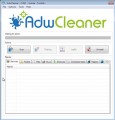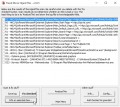Are you start your favorite internet browser and do not see usual home page, which is set earlier? The Bing.com is the first thing that pop up once you run your web browser? It could mean that your PC has become a victim of redirect virus infection. If you get it on your personal computer, this malicious software can alter some web browser’s settings such as start page, new tab page and default search engine. So, the Bing.com may be opened when you create a new tab in your internet browser, or when you try to search for any information within the Mozilla Firefox, Google Chrome, Internet Explorer and Microsoft Edge, because the hijacker infection modifies the browser’s search engine.
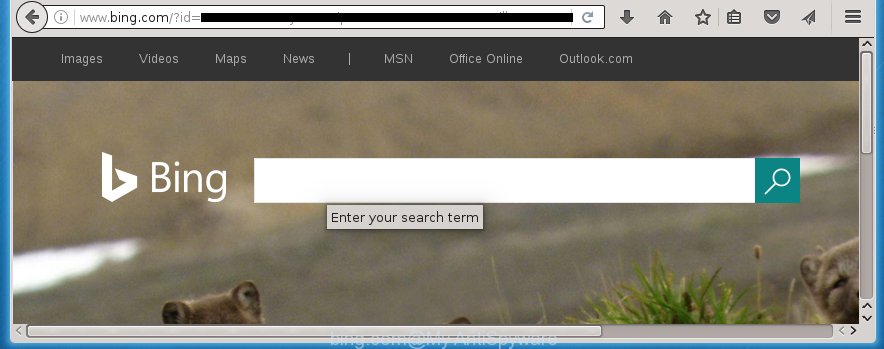
The Bing.com redirect virus may alter settings of internet browsers, but often that the unwanted software can also infect all types of internet browsers by changing their desktop shortcuts. Thus forcing the user to see an unwanted page every time open the web browser.
Table of contents
- What is Bing.com redirect virus
- Remove Bing.com redirect
- How to stop Bing.com redirect
- How can you prevent your system from the attack of Bing.com redirect virus infection
- Finish words
Also, adware (also known as ‘ad-supported’ software) can be installed on the computer together with Bing.com redirect virus. It will insert a ton of ads directly to the web-pages that you view, creating a sense that advertisements has been added by the creators of the page. Moreover, legal ads can be replaced on fake ads which will offer to download and install various unnecessary and harmful software. Moreover, the Bing.com redirect virus has the ability to collect a lot of personal information about you, which can be later sold to third parties.
Thus, it’s clear that the presence of hijacker on your computer is not desirable, and you need to clean up your PC system as soon as possible. Follow the step-by-step guide below in order to remove Bing.com redirect virus.
Remove Bing.com redirect
In the step-by-step instructions below we will have a look at the hijacker and how to remove Bing.com from Google Chrome, Firefox, Microsoft Edge and Internet Explorer internet browsers for Windows OS, natively or by using a few free removal tools and programs.
How to manually get rid of Bing.com redirect virus
The following instructions is a step-by-step guide, which will help you manually delete Bing.com startpage from the Chrome, Firefox, Microsoft Internet Explorer and Edge.
Uninstall suspicious and potentially unwanted programs using Windows Control Panel
The best way to start the PC system cleanup is to uninstall unknown and suspicious software. Using the MS Windows Control Panel you can do this quickly and easily. This step, in spite of its simplicity, should not be ignored, because the removing of unneeded software can clean up the Chrome, FF, MS Edge and IE from pop-ups hijackers and so on.
Windows 8, 8.1, 10
First, click the Windows button
Windows XP, Vista, 7
First, click “Start” and select “Control Panel”.
It will display the Windows Control Panel as shown below.
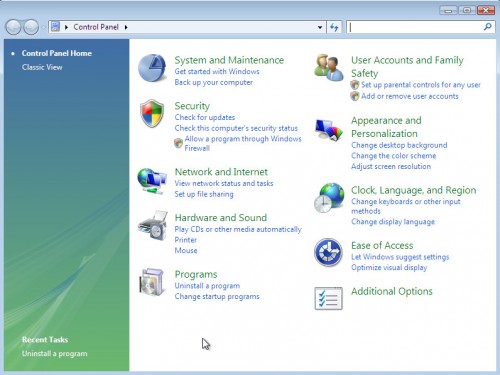
Next, click “Uninstall a program” ![]()
It will open a list of all software installed on your machine. Scroll through the all list, and uninstall any suspicious and unknown applications. To quickly find the latest installed programs, we recommend sort programs by date in the Control panel.
Disinfect the browser’s shortcuts to get rid of Bing.com redirect
Now you need to clean up the internet browser shortcuts. Check that the shortcut referring to the right exe-file of the internet browser, and not on any unknown file.
Click the right mouse button to a desktop shortcut that you use to start your web-browser. Next, select the “Properties” option. Important: necessary to click on the desktop shortcut for the internet browser which is redirected to the Bing.com or other annoying web-page.
Further, necessary to look at the text which is written in the “Target” field. The hijacker can modify the contents of this field, which describes the file to be start when you start your browser. Depending on the web browser you are using, there should be:
- Google Chrome: chrome.exe
- Opera: opera.exe
- Firefox: firefox.exe
- Internet Explorer: iexplore.exe
If you are seeing an unknown text similar “http://site.addres” which has been added here, then you should remove it, as shown on the image below.

Next, click the “OK” button to save the changes. Now, when you run the internet browser from this desktop shortcut, it does not occur automatically reroute on the Bing.com web-site or any other annoying sites. Once the step is finished, we recommend to go to the next step.
Remove Bing.com redirect from Firefox
If your FF browser home page has modified to Bing.com without your permission or a an unknown search engine shows results for your search, then it may be time to perform the internet browser reset.
Click the Menu button (looks like three horizontal lines), and press the blue Help icon located at the bottom of the drop down menu like below.
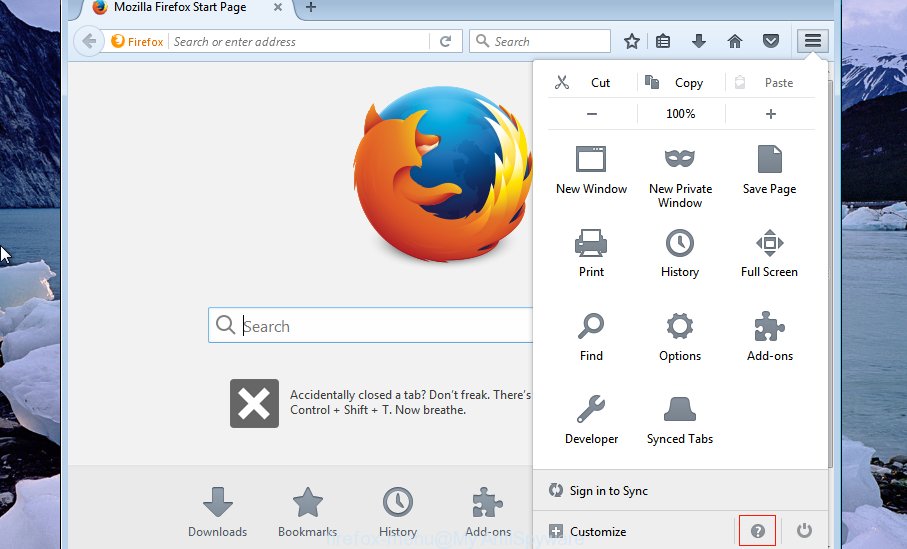
A small menu will appear, click the “Troubleshooting Information”. On this page, press “Refresh Firefox” button as shown below.

Follow the onscreen procedure to revert back your Mozilla Firefox internet browser settings to its original state.
Remove Bing.com from Internet Explorer
To restore the home page, new tab and default search provider you need to reset the Internet Explorer to the state, that was when the Microsoft Windows was installed on your PC system.
First, open the Internet Explorer, press ![]() ) button. Next, click “Internet Options” as shown below.
) button. Next, click “Internet Options” as shown below.

In the “Internet Options” screen select the Advanced tab. Next, click Reset button. The Internet Explorer will show the Reset Internet Explorer settings prompt. Select the “Delete personal settings” check box and press Reset button.

You will now need to restart your personal computer for the changes to take effect. It will remove Bing.com hijacker infection, disable malicious and ad-supported internet browser’s extensions and restore the Internet Explorer’s settings such as newtab page, homepage and search provider by default to default state.
Remove Bing.com redirect virus from Chrome
Reset Google Chrome settings is a simple way to get rid of the redirect virus, harmful and adware extensions, as well as to restore the web browser’s startpage, newtab and search engine by default that have been replaced by redirect virus infection.
First launch the Chrome. Next, press the button in the form of three horizontal stripes (![]() ). It will display the main menu. Further, click the option named “Settings”. Another way to display the Chrome’s settings – type chrome://settings in the web-browser adress bar and press Enter.
). It will display the main menu. Further, click the option named “Settings”. Another way to display the Chrome’s settings – type chrome://settings in the web-browser adress bar and press Enter.

The web-browser will open the settings screen. Scroll down to the bottom of the page and click the “Show advanced settings” link. Now scroll down until the “Reset settings” section is visible, as shown on the screen below and press the “Reset settings” button.
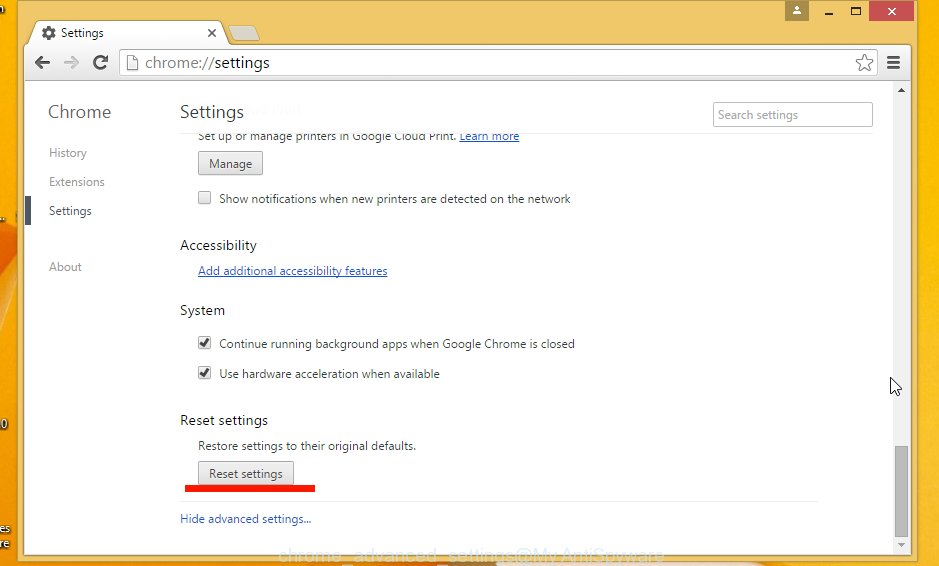
The Chrome will display the confirmation prompt. You need to confirm your action, press the “Reset” button. The browser will launch the procedure of cleaning. Once it is finished, the internet browser’s settings including start page, new tab page and search engine by default back to the values that have been when the Google Chrome was first installed on your personal computer.
Use free malware removal utilities to completely get rid of Bing.com redirect
After completing the manually removal tutorial above all unwanted software and browser’s extensions that causes web browser redirects to the Bing.com web-page should be removed. If the problem with Bing.com redirect virus is still remained, then we suggest to scan your personal computer for any remaining malicious components. Use recommended free hijacker removal programs below.
Remove Bing.com redirect virus with Malwarebytes
We suggest using the Malwarebytes Free which are completely clean your PC system. The free tool is an advanced malware removal program developed by (c) Malwarebytes lab. This application uses the world’s most popular antimalware technology. It’s able to help you delete redirect viruss, potentially unwanted programs, malware, adware, toolbars, ransomware and other security threats from your computer for free.
Download Malwarebytes on your computer by clicking on the link below. Save it on your Windows desktop or in any other place.
327276 downloads
Author: Malwarebytes
Category: Security tools
Update: April 15, 2020
Once the downloading process is finished, close all software and windows on your PC system. Double-click the set up file named mb3-setup. If the “User Account Control” dialog box pops up as shown in the figure below, click the “Yes” button.

It will open the “Setup wizard” that will help you install Malwarebytes on your machine. Follow the prompts and don’t make any changes to default settings.

Once install is finished successfully, click Finish button. Malwarebytes will automatically start and you can see its main screen as shown below.
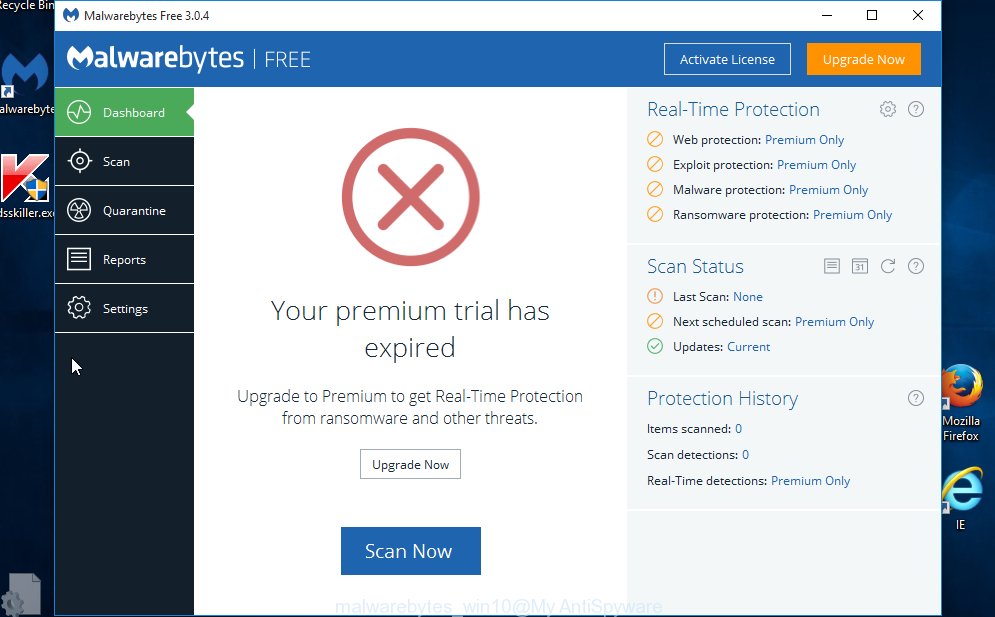
Now click the “Scan Now” button . This will start scanning the whole machine to find out redirect virus which cause a redirect to Bing.com. While the utility is checking, you can see how many objects and files has already scanned.
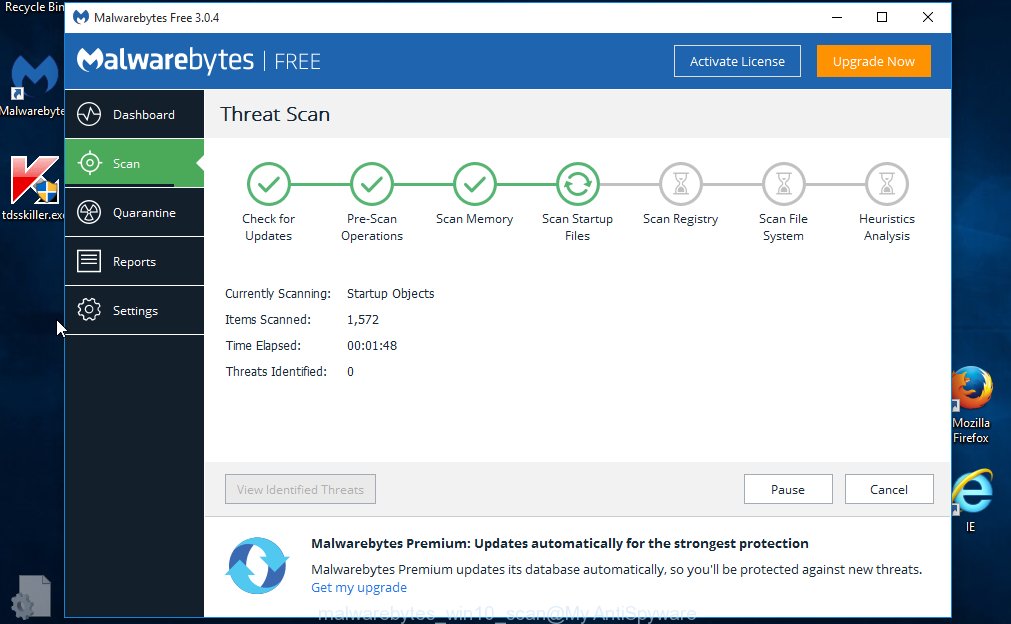
Once the checking is done, the results are displayed in the scan report. Review the report and then press “Quarantine Selected” button. The Malwarebytes will start removing Bing.com hijacker infection and other security threats. Once disinfection is finished, you may be prompted to restart the computer.
I recomend you look at the following video, which completely explains the process of using the Malwarebytes to delete redirect virus and other malware.
If the problem with Bing.com redirect is still remained
If MalwareBytes anti-malware cannot remove this hijacker infection, then we suggests to run the AdwCleaner. AdwCleaner is a free removal utility for redirect viruss, ‘ad supported’ software, PUPs and toolbars.
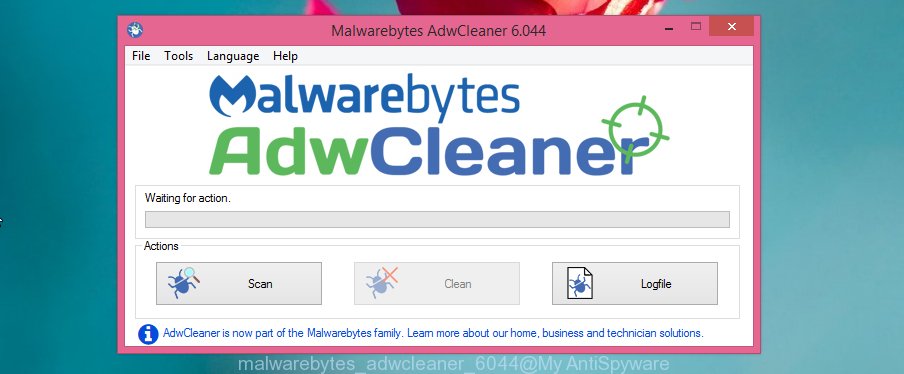
- Download AdwCleaner from the following link.
AdwCleaner download
225634 downloads
Version: 8.4.1
Author: Xplode, MalwareBytes
Category: Security tools
Update: October 5, 2024
- Select the file location as Desktop, and then click Save.
- Once the download is done, start the AdwCleaner, double-click the adwcleaner_xxx.exe file.
- If the “User Account Control” prompts, click Yes to continue.
- Read the “Terms of use”, and click Accept.
- In the AdwCleaner window, press the “Scan” to begin checking your PC for the Bing.com redirect virus which redirects your browser to the Bing.com annoying web page.
- As the scanning ends, it’ll display a list of all threats detected by this tool. Review the report and then press “Clean”. If the AdwCleaner will ask you to restart your system, click “OK”.
The step-by-step guide shown in detail in the following video.
How to stop Bing.com redirect
It is also critical to protect your web-browsers from harmful web sites and advertisements by using an ad blocking program like AdGuard. Security experts says that it’ll greatly reduce the risk of malware, and potentially save lots of money. Additionally, the AdGuard can also protect your privacy by blocking almost all trackers.
- Download AdGuard program by clicking on the following link.
Adguard download
26903 downloads
Version: 6.4
Author: © Adguard
Category: Security tools
Update: November 15, 2018
- After downloading is finished, start the downloaded file. You will see the “Setup Wizard” program window. Follow the prompts.
- Once the installation is complete, click “Skip” to close the installation application and use the default settings, or click “Get Started” to see an quick tutorial that will help you get to know AdGuard better.
- In most cases, the default settings are enough and you don’t need to change anything. Each time, when you run your computer, AdGuard will start automatically and block pop-ups, unwanted redirects, as well as other harmful or misleading web sites. For an overview of all the features of the program, or to change its settings you can simply double-click on the icon named AdGuard, which is located on your desktop.
How can you prevent your system from the attack of Bing.com redirect virus infection
I want to note that the Bing.com redirect virus infection come along with various free applications. This means that you need to be very careful when installing programs downloaded from the Internet, even from a large proven hosting. Be sure to read the Terms of Use and the Software license, select only the Manual, Advanced or Custom setup mode, switch off all additional modules and programs are offered to install.
Finish words
After completing the step-by-step guide outlined above, your computer should be clean from malware and redirect viruss. The Google Chrome, Internet Explorer, FF and Edge will no longer open Bing.com unwanted home page on startup. Unfortunately, if the instructions does not help you, then you have caught a new redirect virus, and then the best way – ask for help.
- Download HijackThis from the link below and save it to your Desktop.
HijackThis download
5000 downloads
Version: 2.0.5
Author: OpenSource
Category: Security tools
Update: November 7, 2015
- Double-click on the HijackThis icon. Next click “Do a system scan only” button.
- When it has finished scanning your computer, the scan button will read “Save log”, click it. Save this log to your desktop.
- Create a Myantispyware account here. Once you’ve registered, check your e-mail for a confirmation link, and confirm your account. After that, login.
- Copy and paste the contents of the HijackThis log into your post. If you are posting for the first time, please start a new thread by using the “New Topic” button in the Spyware Removal forum. When posting your HJT log, try to give us some details about your problems, so we can try to help you more accurately.
- Wait for one of our trained “Security Team” or Site Administrator to provide you with knowledgeable assistance tailored to your problem with the unwanted Bing.com redirects.
